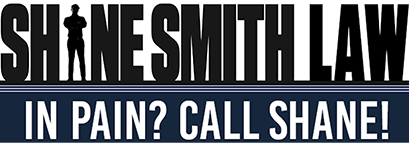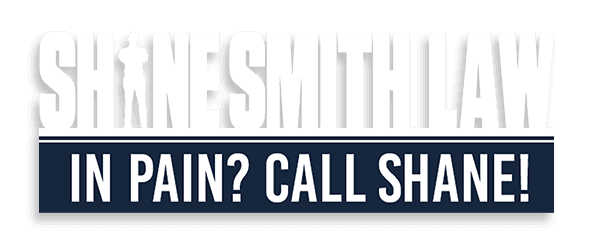Types of Injuries Common in Skiing Accidents
Skiing is an exhilarating sport, but it comes with its fair share of risks. Common injuries sustained during skiing accidents range from fractures and sprains to more severe head injuries. Fractures, particularly of the legs and arms, are frequent due to the high-speed nature of the sport and the potential for falls. Sprains, especially of the knees, are also prevalent, often resulting from awkward landings or sudden twists. Head injuries, including concussions, are particularly concerning and can have long-lasting effects. According to the National Ski Areas Association (NSAA), there are approximately 44.7 serious injuries per million skier visits, highlighting the need for awareness and caution on the slopes.
Statistics further underscore the severity of ski-related injuries. The Consumer Product Safety Commission (CPSC) reports that skiing and snowboarding accidents result in about 600,000 injuries annually in the United States. These injuries can range from minor bruises to life-altering conditions requiring extensive medical treatment. Understanding the types of injuries common in skiing accidents is the first step in recognizing the importance of legal recourse and ensuring that victims receive the compensation they deserve.
Establishing Liability in Ski Accidents
As anyone who followed the Gwyneth Paltrow ski trial knows, determining liability in ski accidents can be complex, often hinging on the concept of negligence and other factors. Negligence occurs when an individual or entity fails to exercise reasonable care, leading to injury or harm. In the context of ski accidents, this could involve a ski resort operator failing to maintain safe slopes or adequately warn skiers of potential hazards. The duty of care owed by ski resort operators includes ensuring that trails are well-marked, equipment is properly maintained, and safety protocols are rigorously followed.
Ski equipment maintenance and rental shop responsibilities also play a crucial role in establishing liability. If a skier is injured due to faulty equipment, the rental shop or manufacturer may be held liable under product liability laws. Proper maintenance and regular inspections of ski gear are essential to prevent accidents caused by equipment failure. In cases where negligence can be proven, victims may have a strong basis for a personal injury claim, paving the way for compensation for their injuries and associated costs.
Documenting the Incident
In the aftermath of a ski accident, documenting the incident is crucial for any potential legal action. Collecting evidence such as photos and videos of the accident scene can provide a clear picture of the conditions and circumstances that led to the injury. Witness statements are also invaluable, as they can corroborate your account of the incident. Filing an incident report with the ski resort is another essential step. This report should detail the events leading up to the accident, the nature of the injuries sustained, and any immediate actions taken by resort staff.
Proper documentation not only supports your case but also helps in establishing the sequence of events. This can be particularly important if there are disputes about the cause of the accident or the extent of the injuries. Ensuring that all relevant details are recorded can significantly strengthen your position when seeking compensation through legal channels.
Seeking Medical Attention
Seeking immediate medical attention after a ski accident is not only vital for your health but also for any future legal claims. Prompt medical evaluation ensures that injuries are properly diagnosed and treated, reducing the risk of complications. Medical records serve as crucial evidence in personal injury cases, documenting the extent of your injuries and the treatments required. These records can substantiate your claims for medical expenses, lost wages, and pain and suffering.
Delaying medical attention can have serious repercussions, both for your health and your legal case. Insurance companies and opposing legal teams may argue that your injuries were not severe or were exacerbated by a lack of timely treatment. By seeking immediate medical care, you demonstrate the seriousness of your injuries and lay a solid foundation for your personal injury claim.
Reporting to Authorities
Reporting the accident to local law enforcement and ski patrol is another critical step. Local authorities can provide an official record of the incident, which can be instrumental in legal proceedings. The ski patrol, often the first responders in such situations, can offer immediate assistance and document the accident's details. Their reports can provide an unbiased account of the incident, which can be beneficial when establishing liability.
Understanding the role of ski patrol in accident documentation is essential. They are trained to handle emergencies and can provide valuable insights into the cause of the accident. Their reports can include information about weather conditions, trail markings, and any potential hazards that may have contributed to the accident. This information can be pivotal in building a strong case for compensation.
Personal Injury Claims
Personal injury claims are a common legal avenue for those injured in ski accidents. These claims are based on the premise that another party's negligence led to the injury. To file a personal injury claim, you must first establish that the ski resort, equipment rental shop, or another party owed you a duty of care, breached that duty, and caused your injuries as a result. The process involves gathering evidence, filing a claim, and negotiating with insurance companies or the opposing party's legal team.
The types of damages you can claim in a personal injury case include medical expenses, lost wages, and compensation for pain and suffering. Medical expenses cover the cost of treatment, rehabilitation, and any future medical care required due to the injury. Lost wages account for the income you have missed out on due to your inability to work. Pain and suffering compensation is intended to address the physical and emotional distress caused by the accident. Understanding these components can help you gauge the potential value of your claim and ensure that you seek adequate compensation.
Product Liability Claims
In some cases, ski accidents are caused by defective equipment rather than the actions of individuals. Product liability claims arise when a manufacturer or retailer provides faulty equipment that leads to injury. To prove a product liability case, you must demonstrate that the equipment was defective, the defect caused your injury, and you were using the equipment as intended. This often requires expert testimony and detailed evidence of the equipment's failure.
Successful product liability claims in skiing have set important precedents. For example, cases where ski bindings failed to release properly, leading to severe leg injuries, have resulted in significant compensation for the victims. These claims highlight the importance of holding manufacturers accountable for the safety of their products. If you suspect that defective equipment contributed to your accident, consulting with a legal professional experienced in product liability can be a crucial step.
Premises Liability
Premises liability is another legal avenue for those injured on ski trips. This concept holds property owners responsible for maintaining safe conditions on their premises. In the context of ski resorts, this means ensuring that trails are well-maintained, hazards are clearly marked, and safety protocols are followed. To prove a premises liability case, you must show that the ski resort was negligent in maintaining safe conditions and that this negligence directly led to your injury.
Case studies of premises liability in ski accidents illustrate the importance of this legal avenue. For instance, if a skier is injured due to an unmarked hazard on a trail, the resort may be held liable for failing to provide adequate warnings. These cases underscore the responsibility of ski resorts to prioritize the safety of their patrons. Understanding premises liability can help you determine whether this legal avenue is appropriate for your situation and guide you in seeking compensation.
Choosing the Right Attorney
Selecting the right attorney is crucial for navigating the complexities of a ski accident case. When looking for a personal injury lawyer specializing in ski accidents, consider their experience, track record, and familiarity with local laws. An attorney with a proven history of handling ski accident cases will be better equipped to understand the nuances of your situation and provide effective representation. During the initial consultation, ask questions about their experience, approach to similar cases, and success rate.
The importance of experience cannot be overstated. An experienced attorney will know how to gather evidence, negotiate with insurance companies, and represent you in court if necessary. They will also be familiar with common defenses used by ski resorts and equipment manufacturers, allowing them to build a robust case on your behalf. Choosing the right attorney can significantly impact the outcome of your case and ensure that you receive the compensation you deserve.
Legal Fees and Costs
Understanding the costs associated with legal representation is essential for managing your case effectively. Many personal injury lawyers work on a contingency fee basis, meaning they only get paid if you win your case. This arrangement can be beneficial, as it aligns the attorney's interests with yours and reduces upfront costs. However, it's important to clarify the percentage they will take from any settlement or award and any additional costs you may incur.
Legal expenses can include court fees, costs for obtaining medical records, and fees for expert witnesses. Discuss these potential costs with your attorney during the initial consultation to avoid surprises later on. Some attorneys may offer flexible payment plans or advance certain costs on your behalf, which can be helpful if you are facing financial strain due to your injuries. Understanding the financial aspects of your case can help you make informed decisions and manage your resources effectively.
The Legal Process
Navigating the legal process in ski accident cases can be daunting, but understanding the steps involved can help you prepare. The process typically begins with an initial consultation, where you discuss your case with an attorney and determine the best course of action. If you decide to proceed, your attorney will gather evidence, including medical records, witness statements, and expert testimony, to build your case. This phase may also involve negotiating with insurance companies to seek a fair settlement.
If a settlement cannot be reached, the case may proceed to trial. The timeline of a personal injury lawsuit can vary, but it generally involves several stages, including discovery, pre-trial motions, and the trial itself. During settlement negotiations and trial, your attorney will advocate on your behalf, presenting evidence and arguments to support your claim. Understanding what to expect during each stage of the legal process can help you stay informed and confident as your case progresses.
Skiing Safety Guidelines
Preventing ski accidents begins with adhering to essential safety guidelines. Wearing appropriate safety gear, such as helmets and padded clothing, can significantly reduce the risk of injury. It's also important to ski within your skill level and avoid trails that are beyond your capabilities. Staying informed about weather and slope conditions can help you make safer decisions on the slopes. For example, icy conditions or poor visibility can increase the likelihood of accidents, so it's crucial to adjust your skiing accordingly.
Following these safety tips can enhance your skiing experience and reduce the risk of injury. Additionally, taking lessons from certified instructors can improve your skills and confidence on the slopes. Skiing with a buddy and keeping a charged phone with you can also provide an added layer of safety. By prioritizing safety, you can enjoy the thrill of skiing while minimizing the potential for accidents.
Understanding Ski Resort Policies
Familiarizing yourself with ski resort policies is another key aspect of staying safe on the slopes. Most resorts have specific rules and regulations designed to protect skiers and ensure a safe environment. These policies often include guidelines for trail usage, lift safety, and conduct on the slopes. Signing liability waivers is a common requirement, and it's important to understand what these waivers mean legally. While they may limit the resort's liability, they do not absolve them of responsibility for gross negligence or unsafe conditions.
Understanding and adhering to resort policies can help you avoid accidents and ensure a safer skiing experience. Take the time to read and comprehend the rules, and don't hesitate to ask resort staff for clarification if needed. Being aware of your rights and responsibilities can empower you to make informed decisions and enjoy your ski trip with greater peace of mind.
Equipment Maintenance and Checks
Regular equipment maintenance is crucial for preventing accidents caused by gear failure. Before hitting the slopes, perform basic safety checks on your equipment, including inspecting bindings, boots, and skis for any signs of wear or damage. Ensure that your bindings are properly adjusted to your weight and skill level, as incorrect settings can lead to serious injuries. If you're unsure about the condition of your equipment, seek professional inspections and maintenance services.
Proper equipment maintenance extends beyond personal gear to rental equipment as well. When renting equipment, choose reputable rental shops that prioritize safety and regularly inspect their gear. Don't hesitate to ask about their maintenance procedures and request adjustments if needed. By taking these precautions, you can reduce the risk of equipment-related accidents and enjoy a safer skiing experience.
Call Shane Smith Law If You Have Been Injured a Ski Accident
If you or a loved one has been injured in a ski accident, understanding your legal rights and options is crucial. At Shane Smith Law, we specialize in personal injury cases, and are here to represent those injured in ski accidents. Our experienced attorneys are dedicated to helping you navigate the complexities of your case and secure the compensation you deserve.
Don't wait to seek the help you need. Contact Shane Smith Law to schedule a free consultation and take the first step towards recovery. Let us help you get back on your feet and back on the slopes safely.
Call Shane Smith Law today at (980) 246-2656 or contact us online.




